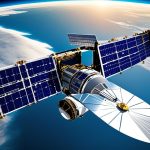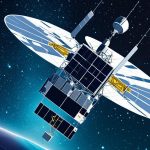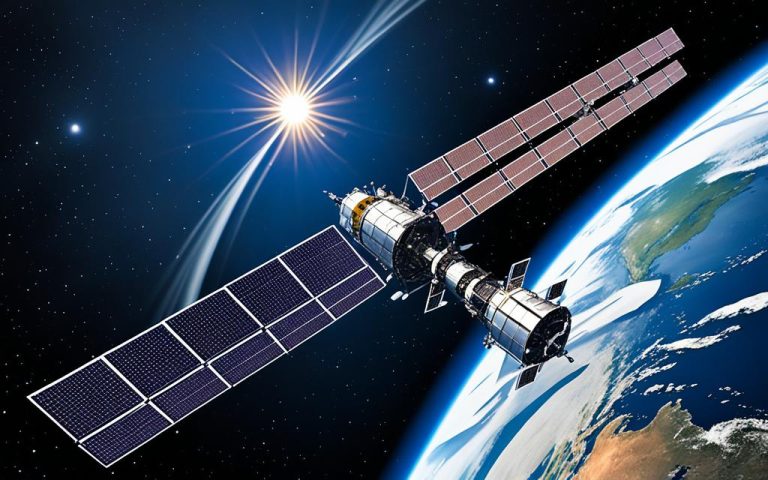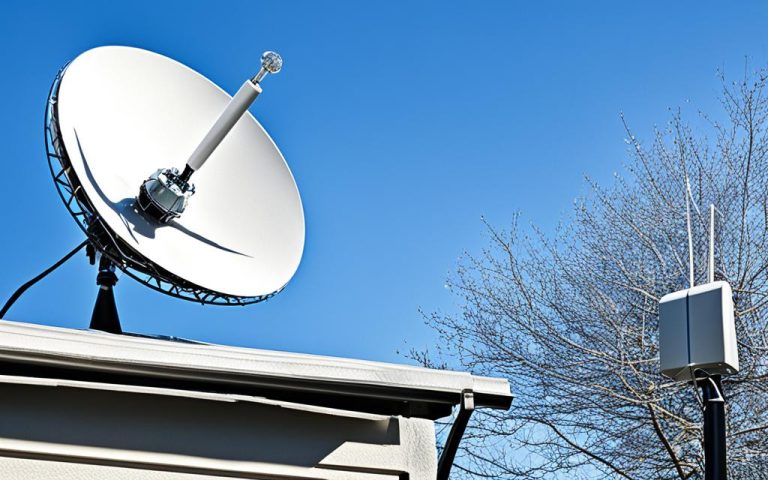Telemedicine has emerged as a transformative tool in healthcare delivery, offering remote access to medical services and bridging the gap in healthcare disparities. However, the reach and effectiveness of telemedicine are often limited by geographical barriers and the lack of reliable infrastructure. That’s where satellite networks come into play.
Satellite networks provide a powerful solution to expand the use of telemedicine, particularly in remote and underserved areas. By leveraging satellite communications, healthcare providers can overcome the limitations of traditional infrastructure and deliver quality care to those who need it most.
Click here to learn more about the benefits of telemedicine satellite communications.
Benefits of Telemedicine Satellite Communications
Satellite communications in telemedicine offer numerous advantages, revolutionizing the way healthcare is delivered. By leveraging the power of satellite networks, telemedicine is able to overcome geographical barriers and improve access to medical services, especially for individuals in remote or rural areas. This is crucial in ensuring that everyone has equal access to care, regardless of their location.
One of the key benefits of telemedicine through satellite communications is the convenience it offers. Patients no longer need to travel long distances to receive medical attention, saving both time and money. Additionally, waiting times can be significantly reduced, allowing for more efficient and timely healthcare services.
Another significant advantage is the cost reduction associated with telemedicine. By utilizing satellite networks, healthcare providers can deliver preventative care at a lower cost, making it a viable option for many individuals. This not only helps to reduce healthcare expenses but also promotes early detection and intervention, leading to improved patient outcomes.
“Telemedicine through satellite networks reduces costs, making it an economically viable option for preventative care.”
In today’s post-pandemic world, another crucial benefit of telemedicine satellite communications is the reduced exposure to illness. By eliminating the need for physical visits to healthcare facilities, telemedicine minimizes the risk of viral or bacterial transmission. This is particularly relevant in situations where infectious diseases or outbreaks are a concern, allowing individuals to receive necessary care while minimizing their exposure to potential pathogens.
Through the seamless integration of telemedicine and satellite communications, the healthcare industry can unlock unprecedented potential. This powerful combination enhances access to care, lowers costs, and reduces the risk of illness transmission, ultimately improving healthcare outcomes for individuals around the world.
Key Benefits of Telemedicine Satellite Communications:
- Improved access to care, especially for remote and rural areas
- Convenience by eliminating the need for travel and reducing waiting times
- Cost reduction, making preventative care more economically viable
- Reduced exposure to illness and potential pathogens
The Power of Connectivity
Geographical and infrastructure limitations pose significant challenges to universal healthcare access, especially in remote and underserved areas. The traditional telemedicine infrastructure, reliant on geostationary satellites and traditional carriers, is constrained by factors such as limited bandwidth, high latency, coverage gaps, and vulnerability to environmental conditions.
However, there is a solution that can overcome these barriers – low-Earth-orbit (LEO) satellites. LEO satellites offer lower-latency, high-speed communication channels, enabling the transmission of real-time medical data. The power of satellite connectivity is instrumental in bridging healthcare gaps and improving access to care, particularly in challenging terrains.
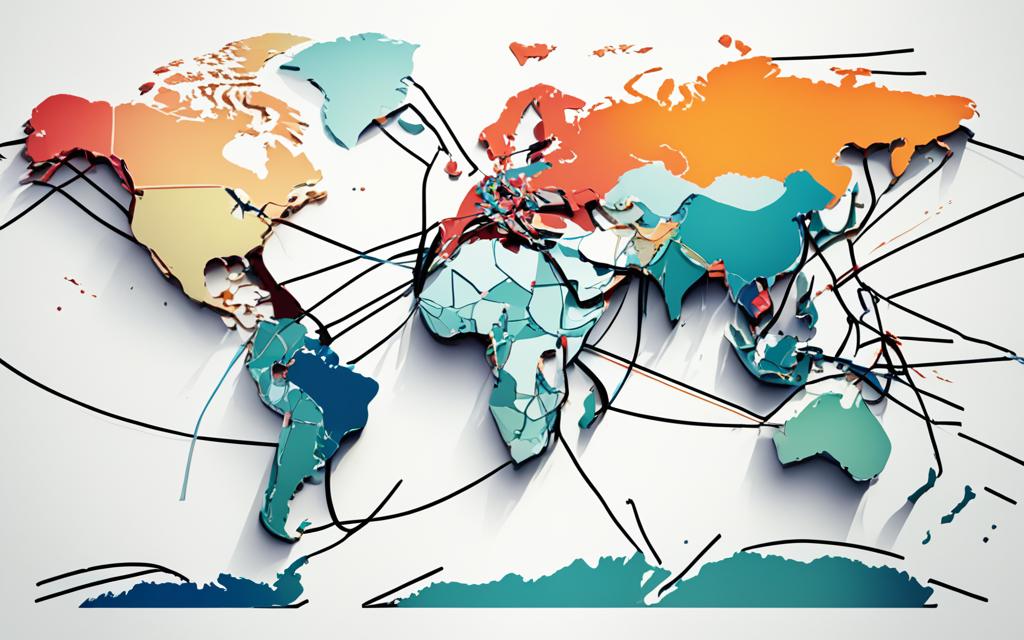
Connectivity is the key to expanding healthcare access in remote areas.
“Satellite connectivity plays a crucial role in overcoming geographical barriers and infrastructure limitations, unlocking access to healthcare services in remote and underserved areas.”
Enhanced Telemedicine and Virtual Care
Telemedicine, or the provision of healthcare services remotely using telecommunications technology, has become increasingly accepted and adopted. Satellite-to-device technology plays a pivotal role in delivering virtual healthcare services to remote and underserved areas.
With satellite connectivity, advanced telehealth platforms can facilitate high-definition video consultations, remote diagnostics, and personalized treatment planning. Careful planning, integration of specialized equipment and software, adherence to regulatory requirements, and testing are necessary to establish reliable, secure, and effective communication links in telemedicine.
Benefits of Satellite Connectivity in Telemedicine
- Improved access to healthcare services in remote areas
- High-definition video consultations for enhanced patient-provider interactions
- Efficient remote diagnostics for accurate and timely medical assessments
- Personalized treatment planning based on real-time data
- Secure and reliable communication links for patient confidentiality
Satellite-to-device technology enables healthcare providers to deliver virtual care to individuals residing in remote areas, bridging the gap in access to healthcare services. With this advanced technology, healthcare professionals can leverage high-speed and secure connections to conduct video consultations, diagnose patients remotely, and create personalized treatment plans. This not only improves healthcare delivery but also enhances patient outcomes, particularly in underserved communities.
By leveraging satellite connectivity, telemedicine can revolutionize healthcare delivery in remote areas, bringing quality care to individuals who would otherwise face significant barriers in accessing medical services. This technology empowers healthcare professionals to provide timely interventions, reduce travel and waiting times, and overcome geographical limitations, ultimately improving healthcare outcomes for patients in remote areas.
| Benefits | Challenges |
|---|---|
| Improved access to care in remote areas | Lack of awareness and universal standards |
| Enhanced patient-provider interactions | Regulatory concerns |
| Efficient remote diagnostics | Funding limitations |
| Personalized treatment planning | Technical implementation challenges |
| Secure and reliable communication | Limited satellite coverage in remote areas |
IoT-enabled Remote Monitoring and Digital Health Solutions
The integration of IoT devices and satellite communication enables real-time remote monitoring of patients’ health metrics, medication adherence, and chronic condition management. Wearable and implantable devices equipped with satellite connectivity provide continuous data streams, empowering healthcare providers to deliver proactive and personalized care interventions. This interconnected ecosystem improves clinical outcomes, optimizes resource utilization, enhances patient engagement, and transforms traditional healthcare delivery models.
Real-time Remote Monitoring
IoT-enabled remote monitoring allows healthcare providers to collect and analyze patient data in real-time, regardless of the patient’s location. Vital health metrics such as heart rate, blood pressure, glucose levels, and oxygen saturation can be monitored remotely, enabling early detection of health issues and timely interventions.
Medication Adherence
Remote monitoring through IoT devices enables healthcare providers to monitor medication adherence and ensure patients are taking their prescribed medications correctly. By receiving alerts and notifications, healthcare professionals can proactively address non-adherence and provide necessary support to the patients.
Chronic Condition Management
Satellite-enabled IoT devices play a significant role in managing chronic conditions, such as diabetes, hypertension, and respiratory disorders. Patients can use wearable devices to track their symptoms, receive personalized treatment plans, and access educational resources to better manage their conditions.
“The integration of IoT devices and satellite communication in healthcare has the potential to revolutionize patient care and improve health outcomes. By leveraging real-time remote monitoring and digital health solutions, healthcare providers can deliver proactive interventions and personalized care to patients, regardless of their geographical location.”
In addition to remote monitoring, satellite-enabled IoT devices also facilitate telehealth consultations, virtual healthcare visits, and telemedicine services. Patients can communicate with healthcare providers through high-quality video consultations, minimizing the need for in-person visits and improving accessibility to healthcare services.
By leveraging IoT and satellite communication, the healthcare sector can enhance patient care, optimize resource utilization, and improve operational efficiency. The continuous data streams from IoT devices enable healthcare organizations to leverage advanced analytics and artificial intelligence algorithms for predictive and preventive healthcare.
Conclusion
The integration of satellite-to-device technology with emerging trends in the healthcare sector is revolutionizing the way healthcare is delivered and accessed. By harnessing the power of satellite communication, healthcare organizations can overcome barriers and bring quality care to remote and underserved areas.
Satellite communication plays a pivotal role in expanding telemedicine capabilities, enabling healthcare professionals to remotely diagnose, treat, and monitor patients. This technology enhances patient care by eliminating geographical constraints and improving accessibility to medical services.
Furthermore, the integration of satellite-to-device technology in the healthcare sector promotes operational efficiency. The real-time transmission of medical data and the use of IoT-enabled devices allow for remote monitoring, early detection, and proactive interventions. This not only improves health outcomes but also optimizes resource utilization.
Despite the challenges of latency, signal reliability, and cost, satellite-to-device technology offers promising opportunities for extending healthcare services to underserved populations. By leveraging the capabilities of satellite communication, healthcare organizations can drive advancements in patient-centered care, enhance population health management, and contribute to global health equity.
FAQ
What is telemedicine?
Telemedicine is the provision of healthcare services remotely using telecommunications technology.
How does satellite communication enhance telemedicine?
Satellite communication plays a crucial role in expanding telemedicine capabilities, improving access to care, and addressing healthcare disparities.
What are the benefits of telemedicine satellite communications?
Telemedicine satellite communications offer advantages such as improved access to medical services, lower costs, and reduced exposure to viruses and bacteria.
How does satellite connectivity help overcome geographical barriers?
Satellite connectivity eliminates geographical barriers, allowing individuals in remote or rural areas to access medical services without having to travel.
What role does satellite communication play in remote monitoring and digital health solutions?
Satellite communication enables real-time remote monitoring of patients’ health metrics, medication adherence, and chronic condition management, enhancing personalized care.
How does satellite-to-device technology transform healthcare delivery?
Satellite-to-device technology improves operational efficiency, patient-centered care, population health management, and global health equity.






